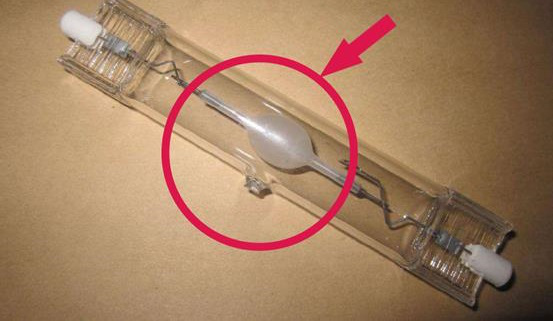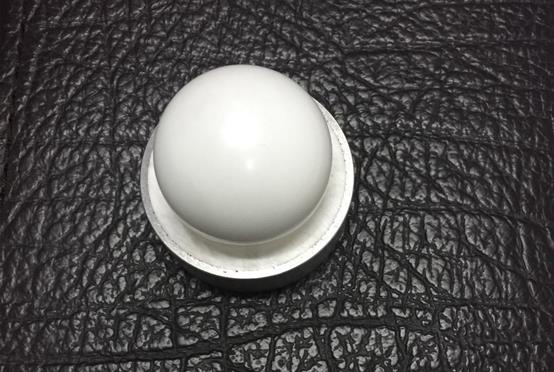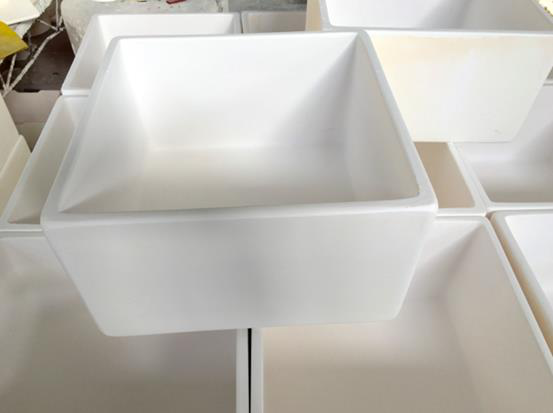Brief Analysis of Common Engineering Ceramic Materials
Engineering ceramics refers to the general term of all kinds of ceramics applied in the field of engineering technology, including structural ceramics, functional ceramics and ceramic matrix composites. Engineering ceramics, with its high temperature resistance, wear resistance, corrosion resistance, chemical stability and unique electrical, thermal, optical, magnetic and other functions, occupies a very important position in the field of new materials. The following is a brief introduction of some common engineering ceramic materials and their applications.
Aluminium oxide ceramics
Alumina ceramics is one of the most widely research and application of engineering ceramics, with high melting point (2050 ℃) and high hardness (hra), 90-92, insulation performance is good, volume resistivity is as high as 1015 Ω, cm), good chemical stability, etc. It is widely used as high-temperature structural materials, wear-resisting materials, electrical insulation materials and chemical-resistant materials, such as high-temperature kiln furniture materials, wear-resisting lining and abrasive body, electric vacuum shell and ceramic substrate, high-temperature flue gas purification ceramic film materials, chemical ceramics, transparent ceramic electronic products lens cover, wear-resisting coating and so on.

The key to the preparation of high performance alumina ceramics lies in the purity, particle morphology, and particle size distribution of the raw material powder. In recent years, the preparation technology of high purity ultrafine or nanometer alumina powder has been developed rapidly with the increasing demand for transparent alumina ceramics and sapphire crystal. Transparent alumina ceramics are prepared from high-purity ultrafine powders with purity up to 4N and particle size less than 100nm, while sapphire crystal growth requires purity up to 5N.
Zirconia ceramics
Among all kinds of metal oxide ceramics, zirconia has the best high temperature stability and is most suitable for ceramic coating and high temperature refractory products. The thermal conductivity of zirconia is the lowest among the common ceramic materials, and the thermal expansion coefficient is close to that of metal materials.
The phase-change toughening characteristics of zirconia ceramics have made it a hot research topic of plastic ceramics, and the excellent mechanical and thermophysical properties make it an excellent reinforcing phase of metal matrix composites. At present, zirconia ceramics are second only to alumina ceramics in the use of various metal oxide ceramics.
Partial stabilized zirconia (PSZ, ceramics often take 3% ω yttrium oxide stabilized zirconia nano powder as raw material) ceramics are currently the highest strength and toughness of ceramic materials. PSZ ceramics have fine grain size, high strength, good toughness, high wear resistance (usually 5-10 times higher than alumina ceramics) and show good self-lubrication. As a wear-resisting structure material, it has been widely used in abrasive mill, ball mill, bearing material, artificial joint, daily-use ceramic cutter and so on.

Silicon carbide ceramics
Silicon carbide ceramic is the most widely studied and applied ceramic material among the non-oxide ceramic materials. As silicon and carbon are covalently bonded to form a tetrahedral structure similar to diamond, they have high strength, high hardness, oxidation resistance and excellent corrosion resistance. Silicon carbide ceramics have different properties and application fields due to their different preparation processes. It can be used as high temperature structural material, refractory material, mechanical seal wear resistant material, acid and alkali resistant corrosion resistant material and high temperature heat exchange material, etc. due to its excellent properties.
Silicon nitride ceramics
Silicon nitride (Si3N4) ceramics is a kind of engineering ceramics which develops rapidly in non-oxide ceramics. The tetrahedral structural unit [SiN4] formed by the covalent bond between silicon and nitrogen makes the ceramics have high strength, high hardness, excellent oxidation resistance and corrosion resistance. Silicon nitride comes in two crystalline forms, alpha -Si3N4 in granular form and beta -Si3N4 in pinprismatic form. Alpha Si3N4 of the fine particles in the billet can be converted into pinprismatic beta Si3N4 at sintering temperature, which acts as self-toughening. Therefore, silicon nitride ceramics have higher strength and toughness than silicon carbide ceramics, which is more suitable for the preparation of grinding medium ceramic tools, bearings and other ceramic products requiring high strength and toughness.
Silicon nitride ceramics have excellent red hardness, especially suitable for high-speed cutting or grinding on high-speed CNC machine tools.
![]()
Quartz ceramic
Quartz ceramics, also known as fused quartz ceramics, have low thermal expansion coefficient and excellent thermal shock resistance. In addition to the traditional molding and grouting of quartz ceramics, the gel injection molding technology developed in recent years has also been applied, and the technology has been successfully used to manufacture glass horizontal toughening roller, floating glass kiln gate brick and other large size quartz ceramics.
The application fields of quartz ceramics include metallurgy, electrical engineering, glass, aviation, photovoltaic and other industries. In addition, it is widely used as melting crucible of monocrystalline silicon and polycrystalline silicon and radome for missile.

Aluminium Nitride Ceramic
Alumina nitride ceramics is a kind of ceramic material with high thermal conductivity but insulation. It has the characteristics of high strength, high hardness and high temperature resistance. Therefore, it has unique advantages in heat dissipating substrates for high-power integrated circuits and electronic components. Aluminum nitride powder with high purity, stable performance, fine particle size and narrow particle size distribution and a small amount of sintering AIDS (nanometer yttrium oxide), combined with hot pressing sintering process is an ideal technical solution for the preparation of high thermal conductivity aluminum nitride ceramics.
Boron nitride ceramics
Boron nitride (BN) has two typical crystal structures, namely hexagonal boron nitride and cubic boron nitride. At present, hexagonal boron nitride ceramics are mainly used in high-temperature insulation materials, advanced lipstick filler, lubrication materials (such as the release agent of hot pressing mold) and crucible for melting metal, while cubic boron nitride ceramics are mainly used to make cutting tools, abrasives and abrasive or polishing materials.
Hexagonal boron nitride is white with a graphite-similar structure, and it has many similar properties to graphite such as low hardness, lubricity. Hexagonal boron nitride is one of the materials with very high thermal conductivity in ceramic materials, the thermal conductivity is 10 times that of quartz, and the thermal conductivity of hot pressed products (such as the hot pressed boron nitride) with high thermal conductivity is 33W/M.K, which is the same as pure iron. Cubic boron nitride has a similar structure to diamond and is the second superhard material whose hardness is only second to diamond at present.









